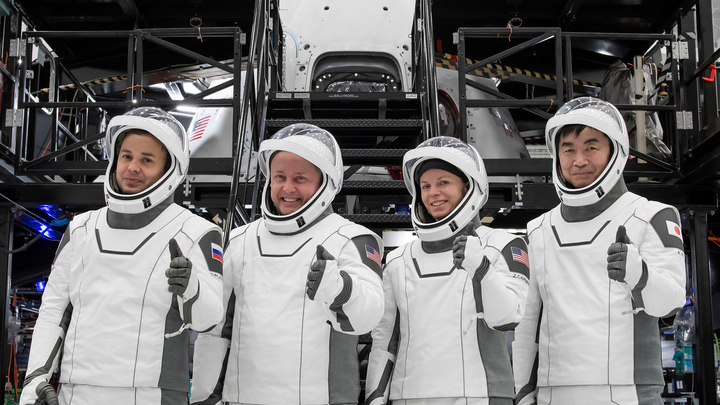Space tug to test out robotic arm on 2022 demonstration mission

Two space companies are teaming up on a planned 2022 mission that could help open up the off-Earth economy.
California-based Momentus and Made In Space Europe (MIS EU) have finalized a memorandum of understanding to develop the flight to Earth orbit, the companies announced last week.
If all goes according to plan, Momentus' Vigoride space tug will be outfitted with one of MIS EU's advanced robotic arms, which "will perform cooperative capture and manipulation of microsatellites," MIS EU representatives said in a statement.
Related: Electric-powered lunar space tug could facilitate future moon missions
"This demonstration mission will provide us with an understanding of how robotic arms can improve in-space transportation," Jaroslaw Jaworski, general manager of Luxembourg-based MIS EU, said in the statement. "We are looking to critically evaluate the viability of these two highly advanced, commercial technologies working within a fully integrated system."
Momentus is developing space tugs powered by water plasma thrusters. These spacecraft are designed to get satellites to a variety of custom orbits, carrying them from the initial orbits that their rockets provide.
Vigoride, which is scheduled to fly for the first time late this year, is just one member of the Momentus line. The company is developing other tugs as well, including one called Ardoride that will be able to haul satellites from low Earth orbit to the moon.
Breaking space news, the latest updates on rocket launches, skywatching events and more!
"Momentus Space is committed to providing unprecedented orbital transportation capabilities," Aaron Mitchell, the company's vice president of product, said in the same statement.
"This mission will enable us to enhance our innovative vehicles with cutting-edge space robotics to offer even greater capability and value to our growing customer base," Mitchell said of the planned 2022 demonstration flight with MIS EU.
MIS EU is a sister company of Florida-based Made In Space, which was recently acquired by the newly formed outfit Redwire. MIS EU, now a Redwire subsidiary, specializes in robotic arms for space applications.
Made In Space is best known for its in-space manufacturing work. The company has sent multiple 3D printers to the International Space Station, and last year it scored a $74 million NASA contract to give its "Archinaut" off-Earth assembly tech an orbital test, perhaps as early as 2022.
Mike Wall is the author of "Out There" (Grand Central Publishing, 2018; illustrated by Karl Tate), a book about the search for alien life. Follow him on Twitter @michaeldwall. Follow us on Twitter @Spacedotcom or Facebook.

Michael Wall is a Senior Space Writer with Space.com and joined the team in 2010. He primarily covers exoplanets, spaceflight and military space, but has been known to dabble in the space art beat. His book about the search for alien life, "Out There," was published on Nov. 13, 2018. Before becoming a science writer, Michael worked as a herpetologist and wildlife biologist. He has a Ph.D. in evolutionary biology from the University of Sydney, Australia, a bachelor's degree from the University of Arizona, and a graduate certificate in science writing from the University of California, Santa Cruz. To find out what his latest project is, you can follow Michael on Twitter.
